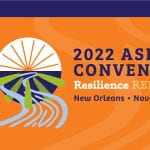
McCarty, T. V. & Light, J. (2022). Supporting peer interactions for students with complex communication needs in inclusive settings; Paraeducator roles. Perspectives of the ASHA Special Interest Groups, 7(1), 229-244. https://doi.org/10.1044/2021_PERSP-21-00141
Purpose
This clinical focus article presents a review of literature supporting the importance of fostering positive peer interactions for students with complex communication needs (CCN). A resulting template is included to help guide educational teams, including speech-language pathologists (SLPs), in planning for paraeducator training specific to supporting peer interactions for children with CCN.
This clinical focus article summarizes the current literature available on inclusion and peer relationships for students with CCN in general education class-rooms and paraeducator roles and training. The World Health Organization’s International Classification of Functioning, Disability and Health for Children and Youth framework was consulted to help establish considerations relevant to paraeducator training. With many demands on the time of SLPs throughout the school day, paraeducators may offer an often untapped resource to help support positive peer relationships for students with CCN.
Conclusions
This clinical focus article provides an overview of challenges that may impede positive peer relationships from developing in inclusive classroom settings, including ones related to (a) the student with CCN, (b) the peers, (c) the augmentative and alternative communication systems, or (d) the environment. The readers will be provided with a template to guide educational teams and SLPs in collaborating with paraeducators to foster positive peer interactions, including the following steps: (1) define goals for the student with CCN and determine supports required from paraeducators, (2) determine content of training for paraeducators, (3) choose an effective instructional approach, (4) establish a feasible training format, and (5) implement the paraeducator training and evaluate outcomes to ensure bene-fits for students with CCN and their peers.
With appropriate paraeducator training, typical school-day routines such as circle time, group work, and turn and talk with a partner can become opportunities for meaningful interactions with peers for students with CCN.
McCarty & Light (2022)

